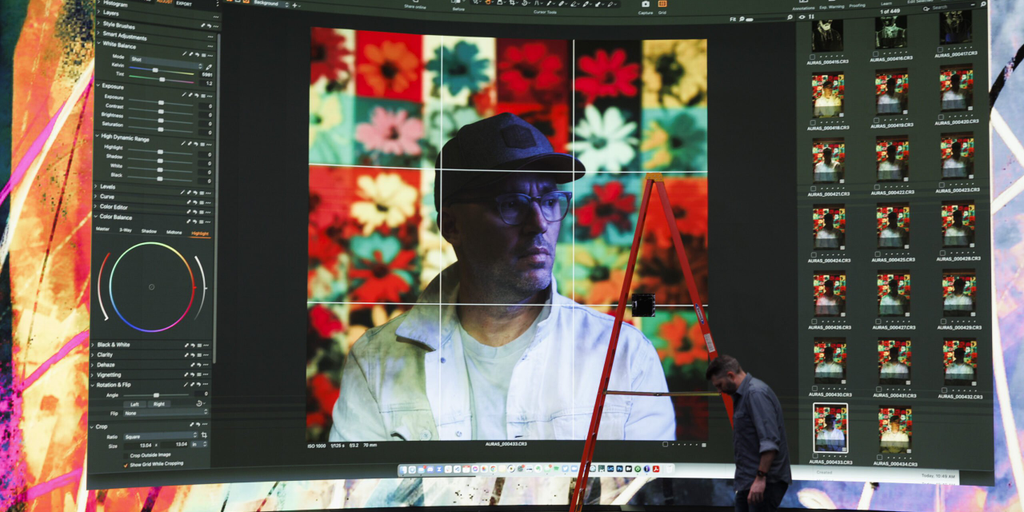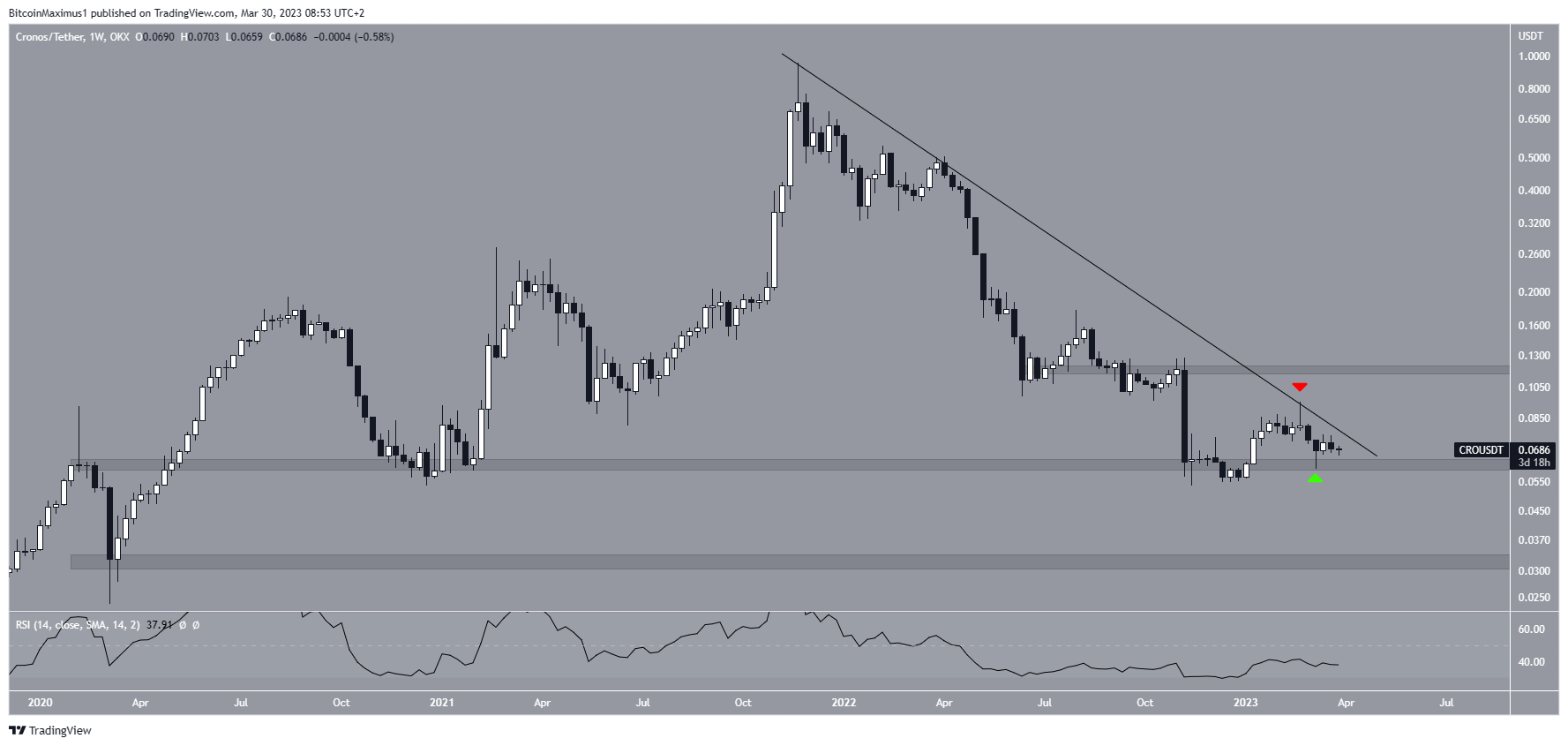Photography as performance art: Jeremy Cowart creates a whole new kind of 10K NFT collection

Jeremy Cowart kept the phone on speaker so he and the rest of his production team could hear.
“I don’t think I’ve ever heard of such a problem ever happening,” the voice from the phone said flatly.
Cowart pursed his lips, but only slightly. In just over six hours, on the huge studio stage in Nashville where he was currently standing, the photographer would attempt – in front of a live audience – to create 10,000 unique photo-based self-portrait NFTs.
Each will feature three distinct layers of carefully selected imagery, including prisms and lasers, all flashing rapidly in random combinations from multiple light sources, including the massive 130-foot LED volume wall looming behind him.
All the images were to be instantly edited into eight different styles (each distributed at varying and pre-arranged frequencies) via an app specially created for this single event by the man on the phone, who was either in Finland or a nearby country (Cowart wasn’t sure). And all of this was supposed to happen in about 20 minutes.
Perhaps unsurprisingly, the MacBook Pro was tasked with processing that everything in real time had a hard time keeping up with.
But even that wasn’t the only concern on Cowart’s mind Tuesday afternoon. The artist planned to be at the center of all these 10,000 images, in a white bodysuit and mask symbolizing a blank canvas. Every move he made during the 20 minutes the thousands of photos were taken would affect their appearance and rarity.
“I have to make sure I stay centered because even if I’m just off center, it’s not working,” Cowart said Decrypt in Nashville, hours before his “Auras” the event was to take place. “Even if I turn my head or angle my head, those are rare traits.”
Cowart’s team prepares for the “Auras” on Tuesday afternoon. Credit: Brett Carlsen for Decrypt
Why did Cowart put these entirely self-created pressures and limitations on himself? There was no practical need for all the shots to be taken in 20 minutes, nor for all to be edited immediately – let alone for this entire, mostly untested process to unfold before a live audience in real time.
“I’m drawn to big, scary things, to things that are really hard,” Cowart said, shrugging when asked why he did this. “And this has pushed me to my limits in all sorts of different ways. I don’t know. I don’t know if it will work. I think it will.”
Cowart tests his lighting. Credit: Brett Carlsen for Decrypt
Cowart is used to being on a big stage, metaphorically. He has photographed subjects including Barack Obama, Taylor Swift and the Kardashians, and his work has regularly been featured in Rolling stone, New York Timesand Time. During that career he has privately experimented with and developed a number of new photography techniques. “Auras” uses many of them, and was finally shown to the world in concert.
“This is the culmination of about 10 years of pushing myself in the studio and trying new things,” Cowart said. “Tonight I reveal all this for the first time.”
By late afternoon, the live photo editing process was still having some issues. So Cowart relented, at least on one point—the 10,000 images could be edited in the five minutes of the capture process, he decided. The audience would still get to see the entire creation process from start to finish, and all in less than 30 minutes.
Suddenly it was time. A little over 150 guests – most from the Nashville area, but also from all over the country – poured into the studio.
Cowart welcomes guests to the event “Auras”. Credit: Cole Plichta
After the opening remarks, Cowart took the stage, his whole body and face covered in white. Bursting classical music boomed from the dark ceiling as a cacophony of lights, designs, images and faces flashed across Cowart’s body to the cheers of the crowd.
The pictures were taken too quickly for the eye to detect. But on the other end of the studio’s massive LED wall, a colossal projection of Cowart’s desk showed the influx of raw images, roughly eight per second, each painted with a completely different combination of images, tones and lights.
Cowart performs “Auras”. Credit: Cole Plichta
The cumulative resulting effect of the performance, which one participant later described as unexpectedly emotional, was hypnotic, and – despite the extreme degree of overstimulation – soothing in its synchronicity.
“The way Jeremy’s art flashed, sometimes [music’s] tempo synchronized perfectly,” shared Cristina Spinei, the composer whose work played throughout the process Decrypt. “I looked at it like, ‘Oh my God, we couldn’t have planned this.’
Cowart performs “Auras”. Credit: Cole Plichta
Spinei, whose music combines classical acoustics with electronic elements, also uses NFTs to release her works. At first, the technology seemed like a more efficient way to control her distribution process. But Spinei’s embrace of the blockchain also had some unexpected consequences.
“When I first got into Web3, I didn’t realize the capacity it would have to change my music,” she said. “It’s a really liberating feeling to be released from a genre. That there is no box an artist must fit into.”
Cowart performs “Auras”. Credit: Cole Plichta
Watching Cowart bare it all Tuesday night, the crowd cheering louder and louder as the picture ticked steadily toward 10,000, Spinei felt the same liberating spirit of Web3 — one focused less on technology, and more on embracing the genuinely weird and new .
“Now there’s a proper place for this work, and an audience that’s interested in something a little different,” Spinei said. “Ideas and projects that break down the barriers of what visual art is, of what music is.”
Just before 8pm in Nashville, Cowart achieved his dream: his series of 10,000 images, all unique, had been flawlessly born in front of a crowd of witnesses. In the aftermath, they came up to congratulate him, shake his hand, hug him, toast him – and, not to miss an opportunity, to have his photos taken on the “Auras” stage.
Cowart enjoys the completion of “Auras”. Credit: Cole Plichta
“Aura” will mint next week on May 9 at OpenSea, with the project created in collaboration with NFT marketplace and digital creator platform Transient Labs. Current holders of Cowart’s previous NFT project, Block Queens, will have the opportunity to mint an “Auras” NFT for free.
Cowart envisioned “Auras” as a series of profile picture (PFP) NFTs, meaning those that holders typically display on social media to signal connection to a particular (often elite) online community. Some of the most prominent NFT pools to date, including Bored Ape Yacht Club and CryptoPunks, are also series of 10,000 tokenized PFPs.
Some attendees at Cowart’s event last night, however, pushed back against associating “Auras” with such gatherings.
“People are taking advantage of Web3 right now. It’s a money printing machine for a lot of people,” Violetta Zironi, a Nashville-based musician who has minted several NFT collections based on her work, told me. Decrypt. “When [a series] comes from a businessman who hires artists to put together some monkey pictures, there is speculation. It’s not art.”
For Zironi, the proof of a project’s artistic merit lies not in the method by which it is distributed, but in the origin of its creation.
“When there is an artist behind a project, and the idea comes from an artist, and you can see it. It’s art, she said. “This came from Jeremy. This is art.”






















